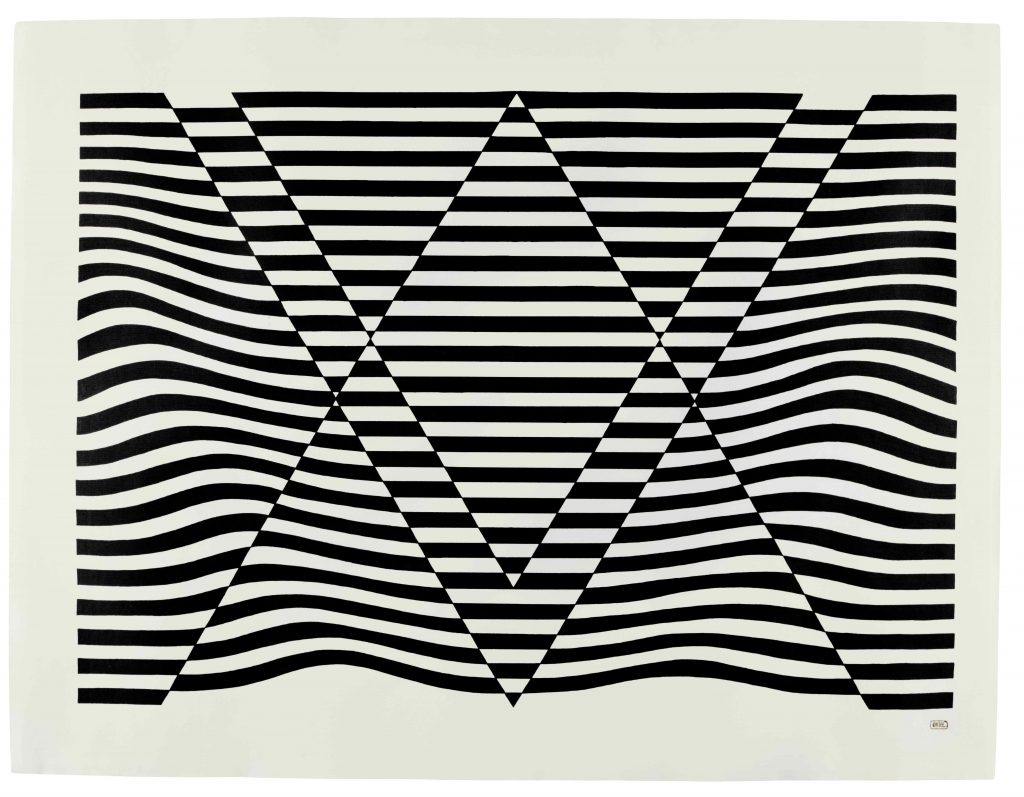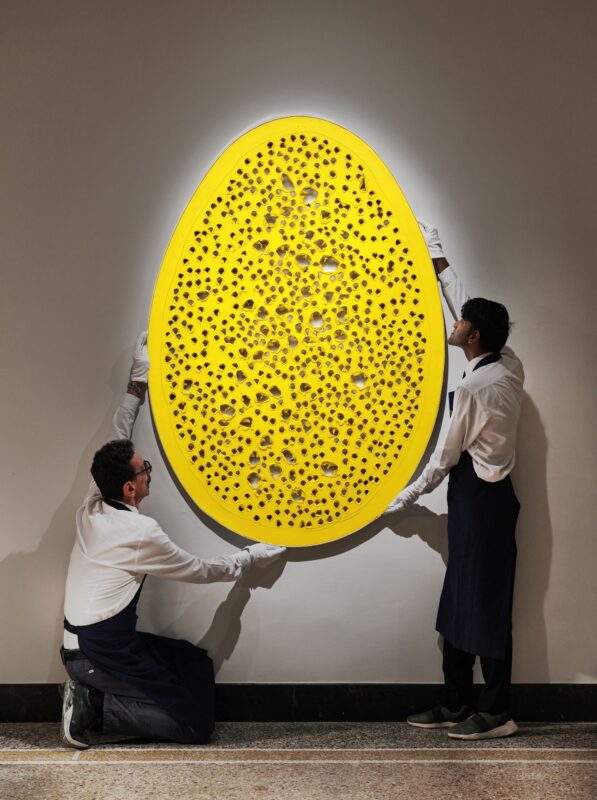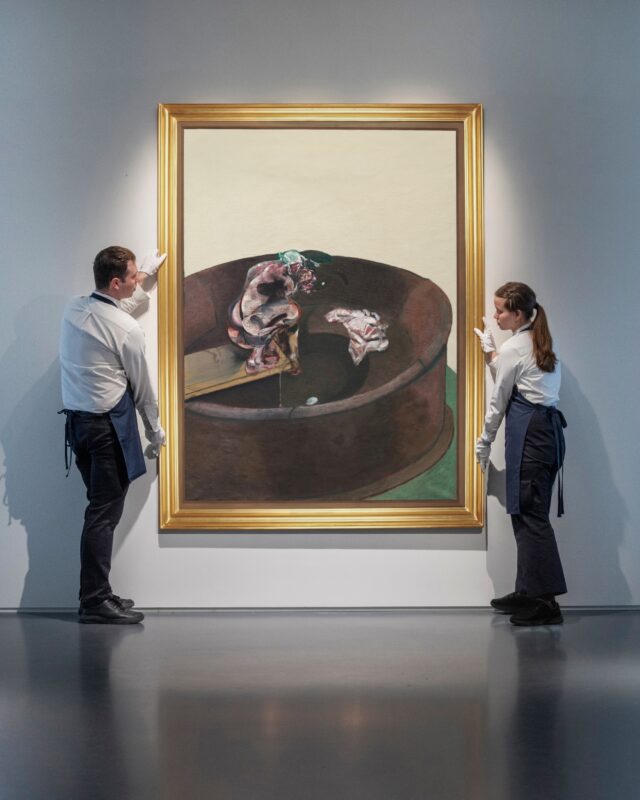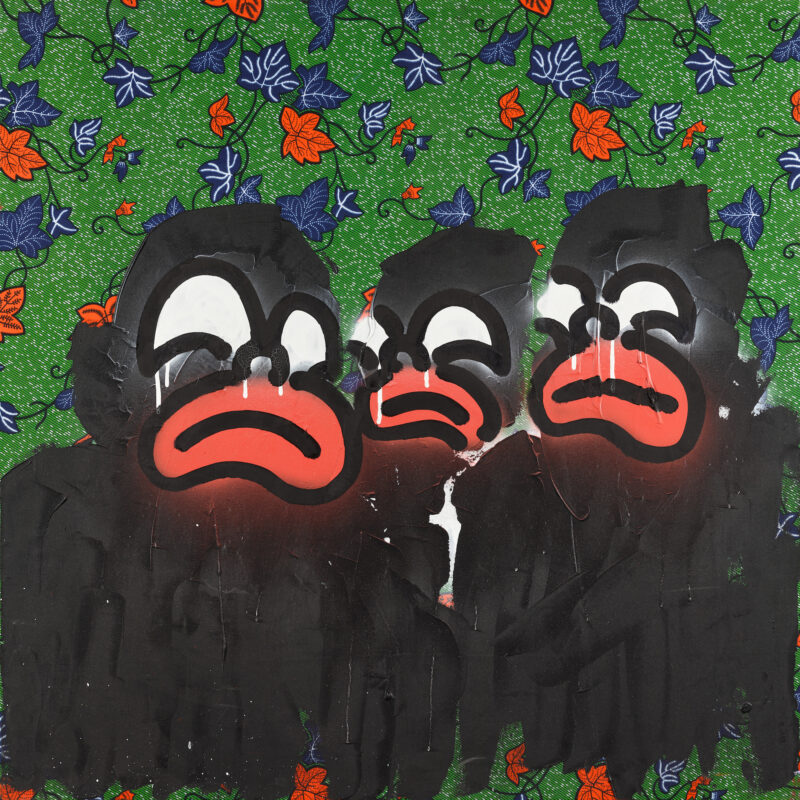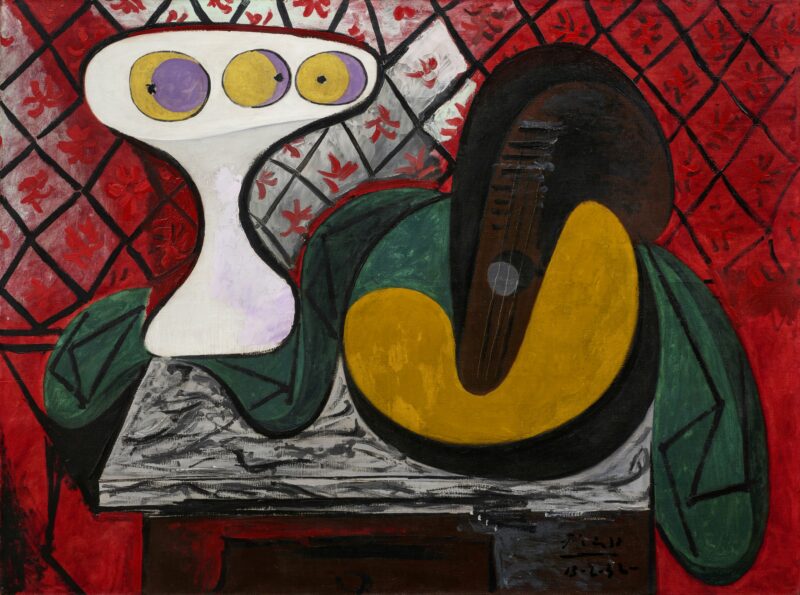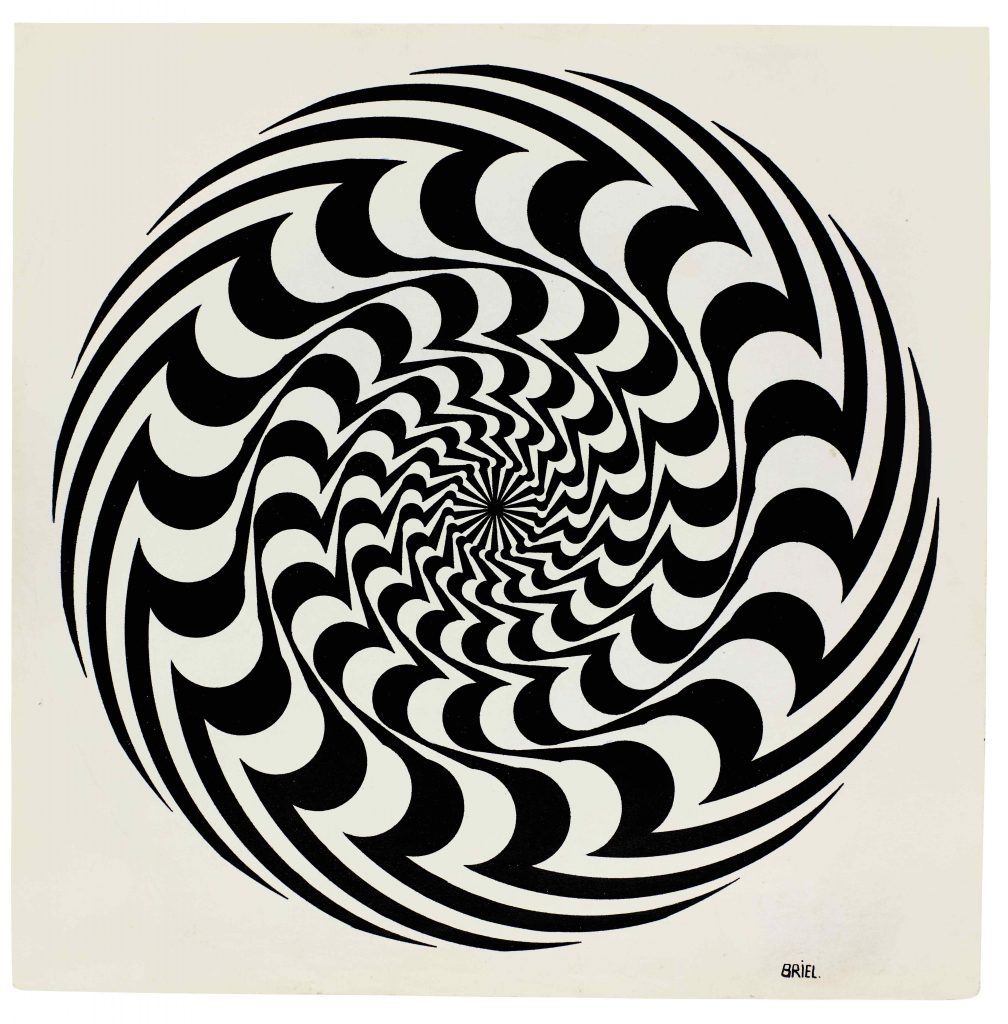
Opened this November in Gallery Two of S|2 is a great exhibition of Cuban artist Ernesto Briel’s works from the sixties and seventies. Born in 1943, Ernesto Briel found inspiration in Optical Art amidst the constraints and limitations of his native country following the Cuban revolution. Facing both the isolation imposed by the US cultural embargo of the sixties, and the relentless persecution by the Castro regime against homosexuality during the early seventies, Briel found motivation in these challenges that would nurture his prolific artistic life.

He was instrumental in the circulation of geometric abstraction in Cuba at this time. Many of his artworks that are included in this exhibition were printed in Signos; a national magazine published in a conscious effort to prevent cultural isolation. Briel left Cuba through the Mariel boatlift in 1980 and continued his practice in New York, receiving the Cintas Foundation fellowship award in 1988-1989 and exhibiting in a number of solo and group shows. These exhibitions included the now historically relevant Duo Geo show in 1992, which featured Briel’s work alongside his friend and fellow Cuban artist, Carmen Herrera. Briel died of AIDS-related complications in 1992. His legacy lives through the myriad of challenges he overcame and his commitment to his artistic practice, especially the international language of Op Art, as a means to transcend cultural boundaries.
Ernesto Briel 24th November – 26th January 2018 S|2 gallery www.sothebys.com/s2
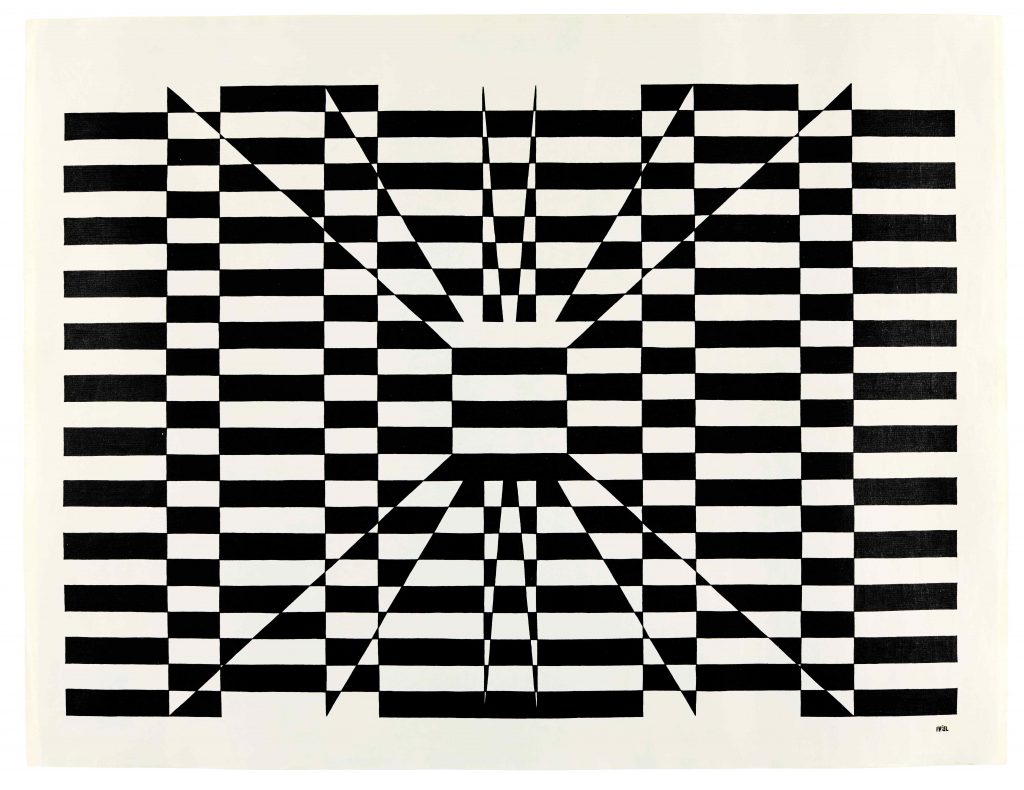
About The Artist
Born in Guanabacoa, Cuba in 1943, Ernesto Briel was instrumental in the circulation of geometric abstraction in Cuba during the 1960s and 1970s. The artist, whose work is currently on display at S|2 London, found inspiration in Optical art amidst the constraints and limitations of his native country in the two decades following the triumph of the Cuban revolution.
From an early age Briel took to representing things he saw around him on paper and became initially inspired by images of modern art he discovered within books and magazines. Rather than simply representing what he saw, he slowly began to reinterpret objects that inspired him through a geometric lens.
In 1961, Briel entered the Academy of San Alejandro in Havana, but discovered that the art school’s politics were completely opposed to the modern tendencies that had inspired him to attend in the first place. Briel had to fight hard for his more modern approach to be acceptanced in the confines of the school and experienced a considerable amount of rejection directed towards his work. Whilst studying at the Academy of San Alejandro, Briel was employed as an actor at the National Theatre of Guiñol, one of the most avant-garde theatres in Cuba’s history.
Briel would later reflect on these two experiences as complete opposites, having attended art school due to his passion for painting, whereas his involvement in the theatre was in order to earn a living. However, the young artists’ attendance at the theatre allowed him to become well known within Cuba’s artistic and theatrical circles.
In 1966, Briel’s work was shown alongside Cuban artist Mario Carreño Morales in his first exhibition, entitled Morales y Briel. Dibujos OP y POP at the Galiano Gallery in Havana. The exhibition set about exploring optical illusions in his practice. It gained acclaim and a wider reach following an article published in the centrefold of the Sunday edition of Cuba’s El Mundo newspaper and shortly after the exhibition his work was reproduced in Islas Magazine, a publication with an international scope. Many of Briel’s artworks, several of which are included in the current S|2 exhibition, were also printed in Signos; a national magazine published from the late 1960s into the 1970s in a conscious effort to prevent cultural isolation.
In 1978, whilst completing a design course at the National School of Design in Havana, Briel became part of a short-lived art group known as the Grupo Cubano de Arte Óptico (The Cuban Group of Op Art). The artist would continue to exhibit his work, in the early months of 1980, he showed his recent work at the vestibule of CMQ (also known as Radiocentro), Havana’s premier TV station. The exhibition further explored the relationship between the kinetic and the optical in art, including an array of drawings, paintings and three-dimensional works.
Whilst working as an actor Briel was given the opportunity to tour Europe with the theatre, but on his return to Cuba he was confronted with a country of increasing totalitarianism. In 1980 the artist made the decision to leave Cuba for New York through the now historic Mariel boatlift. In New York, Briel had access to the work of other artists who had similar concerns, such as Bridget Riley and Frank Stella. Most importantly, Briel encountered the work of two other Cuban geometric abstractionists: Carmen Herrera and Waldo Balart. The three artists learnt to appreciate and admire each other’s work, developing a lifelong friendship.
In 1989, Briel was presented with the Cintas Foundation fellowship award and continued to exhibit in a number of solo and group shows in New York. These exhibitions included the now historically relevant Duo Geo show in 1992 at Jadite Galleries in New York City, which featured work by Carmen Herrera and Briel alongside one another. Sadly, the following year Briel died from AIDS related complications, but the artist’s legacy lives through his commitment to his artistic practice, especially the international language of Op Art, as a means to transcend cultural boundaries.
